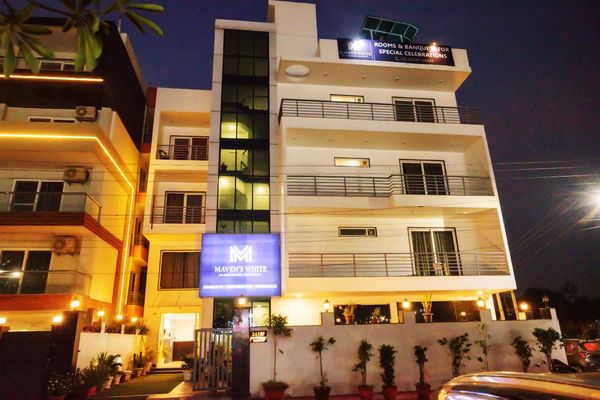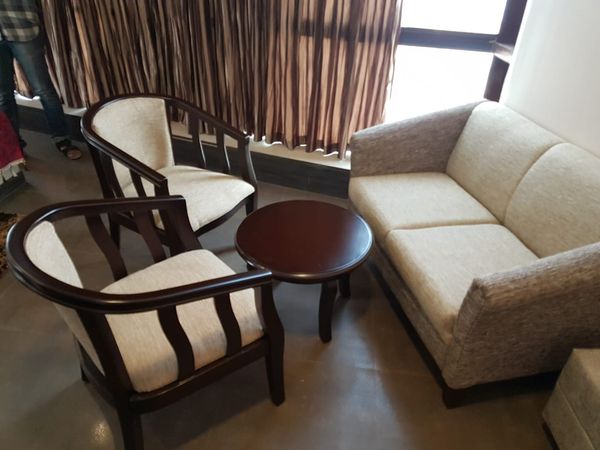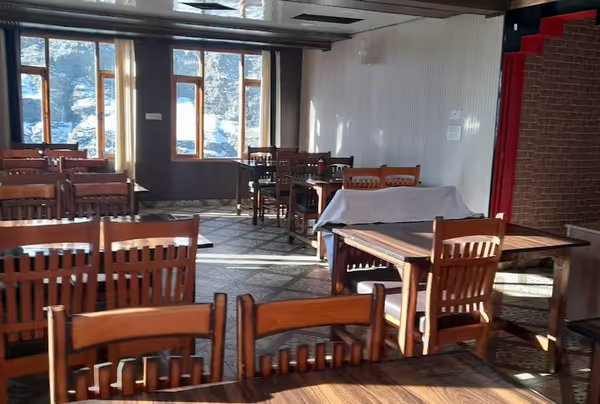Things You Didn’t Know About the Kashmir Great Lakes Trek
 Trekyaari Agency
01 May, 2025
16 mins read
26
Trekyaari Agency
01 May, 2025
16 mins read
26

The Kashmir Great Lakes Trek is often hailed as one of the most stunning treks in India—and rightly so. It combines high-altitude alpine lakes, lush green meadows, rugged mountain passes, and a backdrop of the mighty Himalayas. Trekkers are often captivated by the sheer beauty and serenity of the region. However, beyond the obvious natural splendor, there are numerous lesser-known facts, myths, and cultural tidbits that make this trek far more fascinating than meets the eye.
In this article, we’ll explore things you didn’t know about the Kashmir Great Lakes Trek, offering insights into its hidden aspects, challenges, and cultural richness. Whether you're planning your next adventure or simply curious about this Himalayan gem, you're about to uncover a treasure trove of information.
It’s Not Just About Lakes – It’s a Walk Through the History of Kashmir
Though named after its famous alpine lakes, the Kashmir Great Lakes Trek is deeply intertwined with the cultural and historical heritage of Kashmir. Many trails you walk on were once used by nomadic tribes, ancient traders, and even Mughal emperors, who admired the valley’s natural beauty. These paths hold centuries of stories, often forgotten in modern travel guides.
Historians say that the route has been traveled since the 16th century, used as a seasonal trail by shepherds and traders. Some local folklore suggests that the lakes were considered sacred by early civilizations that once settled in the valley.
There Are More Than Seven Lakes
The trek is often described as covering seven alpine lakes—Vishansar, Krishansar, Gadsar, Satsar, Gangbal, Nundkol, and one unnamed—but trekkers often encounter more than ten stunning water bodies depending on the trail variation, weather, and the season.
Many of these smaller or seasonal lakes are not listed in popular itineraries or maps but can be spotted along detours. Local guides often share stories and names for these hidden lakes, which are passed down orally within the community.
The Lakes Change Colors Based on Time and Weather
One of the most enchanting and lesser-known aspects of the Kashmir Great Lakes is the phenomenon of color-shifting waters. Depending on the time of day, the position of the sun, cloud cover, and even wind conditions, the lakes shift hues—from turquoise and emerald green to deep royal blue.
This natural spectacle is caused by the varying mineral content in the water, glacial sediments, and the refraction of sunlight. It’s something photos often fail to capture fully, making the experience in person truly unforgettable.
You Can Spot the Gujjar and Bakarwal Tribes Along the Way
The Kashmir Great Lakes trail passes through remote regions where you might encounter the Gujjars and Bakarwals, the two prominent nomadic tribes of the area. These communities migrate seasonally with their livestock, and their presence on the trail adds a deeply cultural dimension to the trek.
Their mud-and-stone huts, brightly dressed children, and herds of sheep and goats create a picture of a lifestyle untouched by modern technology. These tribes often offer tea or conversation to friendly trekkers, and hearing their stories can be one of the most enriching experiences on the journey.
Some Lakes Are Believed to Have Healing Powers
In local folklore, some of the lakes you encounter during the trek are believed to have healing properties. For example, it is said that bathing in the waters of Gangbal Lake, located at the base of Mount Harmukh, cleanses one of sins and brings good fortune.
Though these are spiritual beliefs, many trekkers and locals claim that the freshness and purity of these glacial-fed waters have invigorating and even therapeutic effects on the body and mind.
Kashmir Great Lakes Trek Booking Fills Up Fast—Months in Advance
One thing most new trekkers don’t anticipate is the limited availability of slots for this trek. Because it lies in a sensitive zone near the Line of Control (LoC) and has a short weather window (mid-June to mid-September), Kashmir Great Lakes Trek booking opens early and fills up rapidly.
Many reputable trekking companies take only small groups due to ecological and permit regulations, making advance planning crucial. If you're serious about going, it’s wise to finalize your Kashmir Great Lakes Trek booking at least 2–3 months in advance to secure a spot.
You Cross Multiple Mountain Passes at Over 13,000 Feet
Unlike some treks that involve a single pass crossing, the Kashmir Great Lakes Trek takes you over three major high-altitude mountain passes, all above 13,000 feet: Nichnai Pass, Gadsar Pass, and Zaj Pass.
Each pass presents its own set of challenges, including steep ascents, unpredictable weather, and slippery trails. However, the views from the top—snow-covered peaks, endless valleys, and panoramic lakes—make every bit of effort worth it.
The Flora and Fauna Are Exceptionally Diverse
You might expect wildflowers and alpine grass, but the biodiversity on this trek is surprisingly rich. You’ll pass through zones of coniferous forests, alpine meadows, and glacial moraine. The flora includes rare medicinal herbs, including Saussurea costus (locally known as kuth), and colorful wildflowers such as blue poppies and Himalayan orchids.
In terms of fauna, if you’re lucky and quiet enough, you might spot marmots, Himalayan foxes, golden eagles, and even snow leopards in remote areas. However, the most common sightings are of massive flocks of sheep and goats belonging to local shepherds.
You Don’t Need to Be a Pro Trekker—But It’s Not a Cakewalk Either
While the trek is labeled as moderate to difficult, many beginners have successfully completed it with proper guidance, gear, and preparation. It spans over 70 kilometers and takes about 7–9 days to complete, depending on the route.
Acclimatization is crucial due to the elevation, and the terrain varies from boulder fields and river crossings to grassy meadows and snow patches. A few weeks of physical preparation—especially cardio, strength, and stamina training—can make a huge difference in your experience.
It’s a Photographer’s Paradise—But Drones Are Not Allowed
The Kashmir Great Lakes Trek offers some of the most photogenic landscapes in India. From the mirrored reflections of alpine lakes to mist-covered pine forests, every frame feels like a painting. However, a lesser-known fact is that drones are strictly prohibited in this region due to security reasons and its proximity to the border.
Trekkers are advised to carry lightweight DSLR or mirrorless cameras with multiple SD cards and batteries, as there are no charging points after the base camp. And don’t forget waterproof cases, as weather can shift dramatically.
There's No Network—And That's the Best Part
In a world dominated by digital distractions, this trek offers something rare—total digital detox. There's no mobile network beyond the starting village (Sonamarg or Naranag, depending on your route), and no internet cafes or power outlets along the way.
This disconnection becomes one of the trek’s greatest assets. It allows for introspection, deeper human connection with fellow trekkers, and a rare immersion into nature that is often lost in our fast-paced lives.
The Trail Is a Litter-Free Zone—and You’re Expected to Help Keep It That Way
One of the reasons the Kashmir Great Lakes Trek remains so pristine is because of strict eco-regulations enforced by local communities and trekking operators. Trekkers are expected to carry reusable water bottles, avoid plastic packaging, and bring back all waste.
Some organizations even include eco-briefings and clean-up drives as part of their itinerary. By contributing to these efforts, you not only protect the ecosystem but also become a part of the movement to promote responsible tourism in Kashmir.
Permits and ID Checks Are Mandatory
Due to the sensitive nature of the region, trekkers are required to carry multiple government-issued IDs. In many cases, your trekking group leader will handle the permits, but you’ll still need to produce your documents at several army checkpoints along the route.
Make sure to carry multiple photocopies of your ID, preferably Aadhaar card or passport, and keep soft copies on your phone as well.
There Are Tales of Hidden Treasure and Sacred Spirits
Locals often speak of hidden treasure buried in the mountains by kings or invading armies, protected by spirits that guard the land. One particularly popular legend involves a sunken palace beneath one of the lakes, with golden idols and ancient manuscripts that only the worthy can retrieve.
While these stories are certainly mythical, they add an aura of mystery and magic that makes the journey feel like a page out of a fantasy novel.
Kashmir Great Lakes Trek Booking Often Includes Cultural Immersion
In recent years, some trek operators have begun offering cultural immersion experiences as part of the trek. These may include overnight stays in Gujjar huts, traditional Kashmiri meals, or storytelling sessions around a bonfire.
Such experiences offer a deeper understanding of the region’s traditions, history, and hospitality. If you’re interested in such offerings, mention it while researching your Kashmir Great Lakes Trek booking, as not all agencies include this feature by default.
Final Thoughts
The Kashmir Great Lakes Trek is more than just a scenic adventure—it's a journey through culture, history, mythology, and untouched natural beauty. From color-changing lakes and ancient tribal routes to legends of treasure and eco-conscious travel, this trek has layers waiting to be uncovered.
If you’re someone who appreciates the story behind the scenery, this trek will offer far more than you ever expected. Just remember: plan early, pack smart, respect the environment, and keep your heart open for the wonders that await.
Written By:
Trekyaari Agency



Hotels at your convenience
Now choose your stay according to your preference. From finding a place for your dream destination or a mere weekend getaway to business accommodations or brief stay, we have got you covered. Explore hotels as per your mood.





